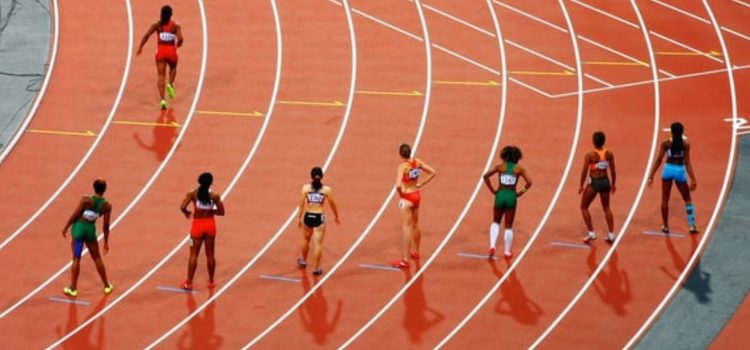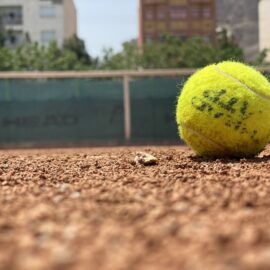

This article is an excerpt from the Shortform book guide to "The Sports Gene" by David Epstein. Shortform has the world's best summaries and analyses of books you should be reading.
Like this article? Sign up for a free trial here .
What role does culture play in sports success? Is athletic ability a matter of nature or nurture?
An athlete’s dedication to their sport is, at least in part, a product of socioeconomic factors and culture. Even the genetic advantages of a Nilotic body type, the ideal altitude circumstances, and the narrow lower legs of Kenyan runners still do not completely explain their running dominance.
Let’s look at the interplay between culture and sports success.
Sprinting Celebrity in Jamaica
Just as Kenya is known for producing talented distance runners, Jamaica has a reputation for producing talented sprinters. Epstein notes that the national 100m dash record-holders in Canada and Great Britain are both originally from Jamaica, and many of the top sprinters in the US have Jamaican roots.
(Shortform note: Most Jamaicans have West African heritage due to the slave trade, and so will share the characteristic high ratio of type 2 muscle fibers discussed in the previous section.)
In a similar pattern to Kenyan runners being heavily represented by the Kalenjin tribe, many top Jamaican sprinters come from Trelawny, a smaller community in the Northwest of the country. Both Usain Bolt and Veronica Campbell-Brown (who won gold in the 100 and 200 and 100m sprints respectively at the 2008 Olympics) are from Trelawny.
Just as scientists have yet to pin down why athletes in the Rift Valley seem to have adapted to altitude in a uniquely athletic way, researchers are not yet able to explain why more sprinters come from Jamaica. Since Jamaicans have largely West African ancestry, a high ratio of fast twitch muscle fibers may provide an initial advantage, but this does not explain how Jamaica continues to produce a disproportionately large number of elite sprinters. Epstein notes that Jamaican culture can help explain why so many talented Jamaican athletes focus on sprinting.
Reason #1: As Epstein describes it, youth track is to Jamaica what football is to the United States. Epstein describes the Jamaican running event CHAMPS (the national high school track and field championships) as an event akin to the American Super Bowl. One hundred high schools compete over four days, with a stadium full of fans as well as talent scouts from American colleges. The event is even more popular than professional sports in Jamaica.
Championship track meets can certainly draw large crowds in the United States, but they do not carry the excitement, fan base, and potential for celebrity found in important football or basketball games. Epstein notes that there are likely many talented young athletes in the United States who could be very successful in track and field but chose to focus on more popular sports instead. (Another example of nature and nurture, these athletes may have the nature for sprinting but chose football based on nurture.)
(Shortform note: According to a Gallup poll, the most popular sports (measured by viewership) in the United States are football, basketball, baseball, and soccer, in that order. Less than 0.5% of people chose track and field as their favorite sport to watch. This helps to explain why young American athletes would choose to focus on the four sports listed above instead of focusing their speed on the track. In fact, in The Sports Gene, Epstein notes that some people worry that the growing popularity of basketball in Jamaica may draw some promising athletes away from the track.)
Reason #2: Jamaican coaches do not overtrain athletes: Like the Kalenjin, who believe that runners can take up the sport at any age if they have the will and ability, Jamaican coaches are not in a rush to get promising young athletes into rigorous training programs. Epstein notes that, until athletes are 15 or 16, they do not run every day or lift weights, and coaches cautiously avoid overtraining. Epstein also notes that Jamaican coaches believe that the NCAA over-races track and field athletes.
(Shortform note: It is worth noting that the two cultures that arguably produce the world’s top runners both display a different mentality toward age and sports than is common in the United States. Epstein notes that there is a general rush to get promising young athletes in the US into training programs as young as possible, before it is “too late,” Both Kenyan and Jamaican cultures have a more relaxed idea about talent, believing that innate talent will emerge when the athletes are ready.)
Reason #3: While children are not pushed into early hard training, children in Jamaica are pushed to try sprinting from a young age. Young children who show potential are recruited to high schools with competitive track teams, and high school students are even sponsored by local retailers. That such an interest is taken in runners at such a young age is a testament to the cultural importance of sprinting events in Jamaica.
In Jamaican sprinting, we see a similar scenario to Kenyan running. A naturally talented pool of athletes choose to focus on a particular sport in part because of cultural encouragement. Jamaican sprinters may possess a natural talent in sprinting due to their naturally high ratio of type 2 muscle fibers, but they choose to put those gifts to use in sprinting because it is part of the culture that they grew up in. Again, we see that nature and nurture create elite athletes. Epstein suggests that if these naturally gifted athletes were raised in the United States, many of them would likely focus on football (or other popular sports) instead of sprinting, since football holds a special place in American culture.
| Culture and Sports Success Kenya and Jamaica are not the only countries that have developed a “dynasty” in certain sports. Epstein notes that German athletes have taken first place in dressage events at every Olympic games held between 1984 and 2008. He adds that rather than German people having genes well suited to dressage, this likely has to do with the cultural value placed on the sport. Other well-known sports dynasties listed in a Washington Post article include:The United States in women’s basketball (winning nine out of 10 Olympic gold medals since 1984)Great Britain in the men’s coxless 4x rowing event (winning five straight gold medals)Chinese women in singles table tennis (who have taken every Olympic gold medal since 1988)Perhaps the most impressive of these dynasties is the South Korean women in the Olympic three-person archery event. They have won every possible gold medal since the event was added to the Olympics in 1988. An article from the BBC provides insight into how South Korea consistently produces the world’s best archers. Once again, culture plays a large role. The article notes that South Korean children begin archery lessons in primary school. Young children who show talent receive up to two hours of training a day (proponents of the 10,000-hour rule would likely cite this as the primary reason for their success). The best archers go on to be employed by private companies that fund their own archery teams. This means that there is a large pool of professional archers in South Korea who are paid to continue to hone their skills. The article also cites innovative, science-based training programs and huge amounts of money spent on training venues and equipment as reasons for South Korean success. |
Kenyan Runners and Exceptional Motivation
The statistics on Kenyan running dominance are impressive, and they certainly suggest a naturally superior running ability in Kenyan marathoners. However, Kenyans are not the only runners with body types ideally suited for distance running. While traits such as long slender legs, thin lower legs, and altitude adaptations are more common in the Rift Valley than in other parts of the world, that does not mean that they are unique to Kenya. Epstein cites a paper in the European Journal of Applied Physiology comparing running economies (a measure of how biomechanically efficient runners are) between elite Kalenjin runners and elite European marathoners with the same finishing time (2:08). The study found that the running economies between groups were too similar to explain Kenyan running dominance.
Epstein cites this study as an example of how both nature and nurture together create elite athletes. He notes that, although they would be the exception rather than the rule, there are plenty of people with similar body types to Kenyan runners in other countries. However, there are far fewer athletes with the combination of the “ideal” body type and Herculean motivation to train outside of Kenya. Epstein cites three reasons for this exceptional motivation:
- Poverty: Epstein notes that the average income in Kenya is $800 per year. This means that the prize money from winning a large marathon would be a fortune for the average Kenyan runner, and even winning a local or regional race could mean more money than athletes would otherwise earn in a year.
- Inclusive training philosophy: Epstein describes an open training culture in the Kalenjin population. He notes that elite athletes often train alongside aspiring runners, who will drop in on training sessions to see how they compare. Additionally, aspiring Kenyan runners are often young adults coming into the sport for the first time. Epstein notes that Kenyan runners believe that if someone has the talent and puts in the work, age is not an obstacle.
- Early “training”: One study showed that 81% of elite Kenyan runners were from poor families and had to walk or run to school. This walking served as a form of early training, giving walkers a 30% higher aerobic capacity than students who did not have to walk to school. The same research showed that the top runners had to walk six miles, sometimes more, to school every day.
- This trend held true in the Oromo population in Ethiopia, with runners who succeeded in the marathon having walked or run farther to school each day than those who excelled at shorter races. (Anecdotal evidence from elite runners who made a significant amount of money by racing shows that their children did not continue their running legacy, likely because they are able to take a car to school.)
While the answer to why Kenyans dominate distance running to such a degree is neither finalized nor simple, we can say that the combination of an “ideal” body type for their sport, the ideal altitude scenario for an athlete, a training regimen that began in childhood (whether or not it was recognized as such), a culture which normalizes running aspirations regardless of age or experience, and exceptional motivation can all help to explain Kenyan dominance in distance running events. Since none of these factors alone can account for their success, Epstein uses Kenyan runners as a perfect example of a combination of nature and nurture creates elite athletes.
A Note About Sudanese Runners
Just as culture can help explain why certain people become elite athletes, it can also help explain why others do not. Epstein notes that since athletes from Kenya and Ethiopia have had such success on the world stage, it would make sense to expect to see successful runners from adjacent Southern Sudan. However, he notes that at the time of writing, it was a rarity to see a Sudanese runner in international competitions. This is because Sudan had been embroiled in a violent conflict that has prevented athletes from training and competing.
Since data was unavailable, Epstein used the “Lost Boys of Sudan” (a group of 3,600 boys who fled violence in their country and were ultimately housed with foster families around the US) as a case study. Many of the “Lost Boys” found running success shortly after arriving in the United States, becoming some of the top school-age runners in their respective states. Epstein notes that 22 of 3,600 were successful enough to have articles published about them. While 22 might seem like a small number, he notes that this would be like 22 exceptional runners coming out of the same big high school at roughly the same time—an unlikely scenario. Two notable members of this group include Lopez Lomong (who made two Olympic teams and was the US flag bearer in Beijing) and Guor Maria (who made the Olympic marathon team in 2011).
(Shortform note: South Sudan competed as a country in the 2016 and 2021 summer Olympics. While they have not won any medals yet, the country has only sent five athletes to the Olympic games so far. All of them have been runners.)

———End of Preview———
Like what you just read? Read the rest of the world's best book summary and analysis of David Epstein's "The Sports Gene" at Shortform .
Here's what you'll find in our full The Sports Gene summary :
- A look at how our genes play a determining role in our success in sports
- Why practice doesn't always guarantee success
- The fortuitous gene pairings that can lead to elite athleticism






